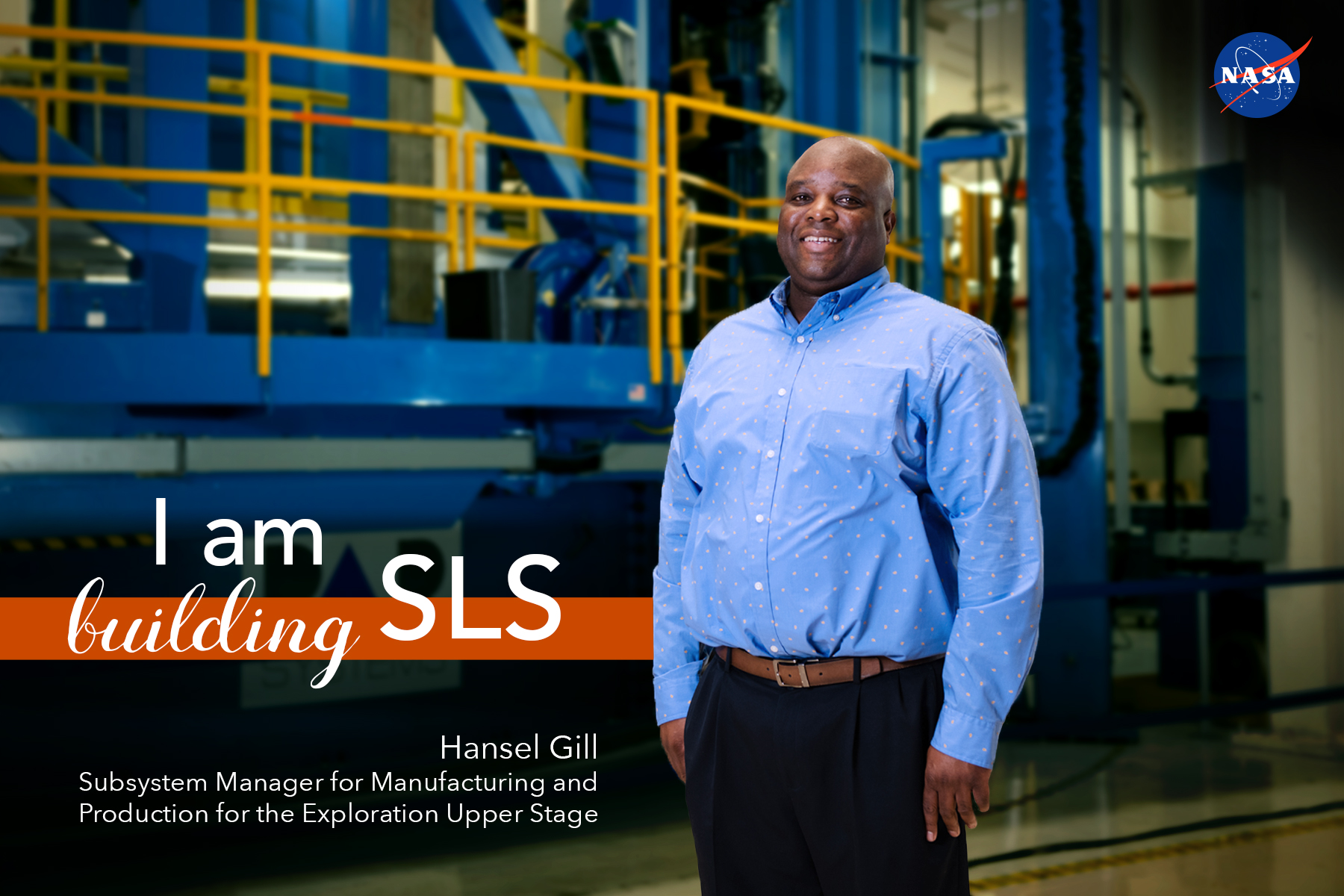I Am Building SLS: Hansel Gill
I started working at NASA as a summer intern just two weeks after I graduated from high school. By the end of that first summer, I knew I wanted my career to be with NASA, but I didn’t know then just what that career would entail. It’s hard to believe that the hardware I’ve helped build will enable America’s return to the Moon.
As the subsystem manager for manufacturing and production for the exploration upper stage of NASA’s Space Launch System Program, I am in the front row as blueprint designs transform into actual hardware for the rocket that will launch NASA’s Artemis missions — and astronauts — to the Moon.
The SLS rocket is a huge, complex piece of hardware that is designed to deliver propulsion in stages to send NASA’s Orion spacecraft and heavy cargo to the Moon for the Artemis missions. While the core stage and solid rocket boosters will launch the rocket and spacecraft into Earth’s orbit, the upper stage provides the in-space propulsion to send the spacecraft, its crew and its cargo farther into deep space.
The rocket’s core stage design will essentially remain the same for each of the Artemis missions. But, the rocket’s upper stage is designed to meet various mission requirements and goals to enable even larger cargos to the Moon and beyond.
My role bridges the gap between the design team at NASA’s Marshall Space Flight Center in Huntsville, Alabama, where the SLS Program is managed, and the manufacturing team at NASA’s Michoud Assembly Facility in New Orleans, where the SLS rocket’s core stages and exploration upper stages are produced. My job is to ensure NASA and Boeing, the core stage lead contractor, are creating a technically sound rocket; and that the manufacturing and assembling teams are doing their work as efficiently as possible. It takes a lot of communication, teamwork and planning.
Because of this, I divide my time between Alabama and Louisiana. My time between Michoud and Marshall allows for face-to-face time that you can’t get from a distance. More importantly, I get to be on the floor with the hardware, which gives me a better understanding of the technical challenges because I can see it. It’s real.
My primary responsibilities revolve around the development and production of the upper stages for the SLS rocket. That requires a thorough understanding of the core stage, which is located just beneath the upper stage of the rocket that generates more than 2 million pounds of thrust to help launch SLS and Orion, and its production. My team and I tracked the production and assembly of the first core stage for Artemis I, so we could capture the lessons learned and apply those to the production of the upper stages for future rockets and Artemis missions.
I love hardware and being part of the build process. After earning my undergraduate degree in mathematics from Oakwood University and a graduate degree in industrial and systems engineering from the University of Alabama in Huntsville, I spent the first half of my career in metallic materials engineering, which has a production component. As I transitioned farther into the production side, my appetite for it only grew. I enjoy seeing these large systems being put together.
The Artemis missions are a source of inspiration for all of us. Being on the factory floor, interacting with and watching the steady hum of activity as men and women work on America’s rocket, makes me even more excited for the mission ahead and the new worlds that will be reached because of our work.



























